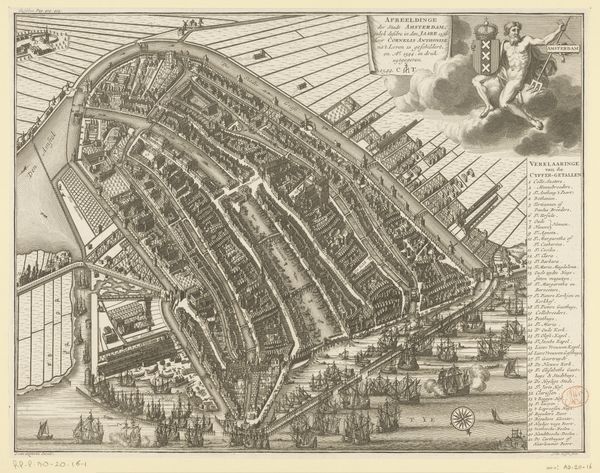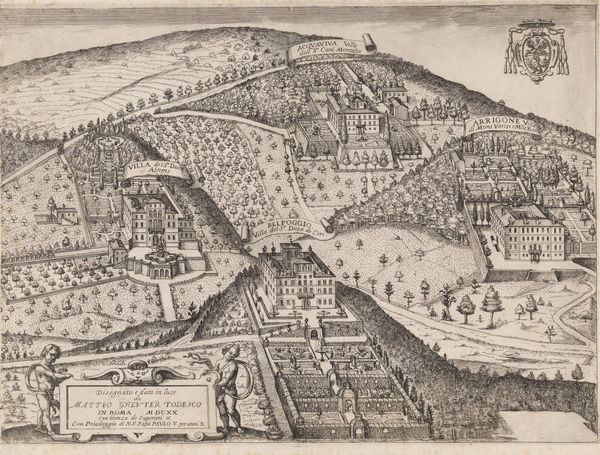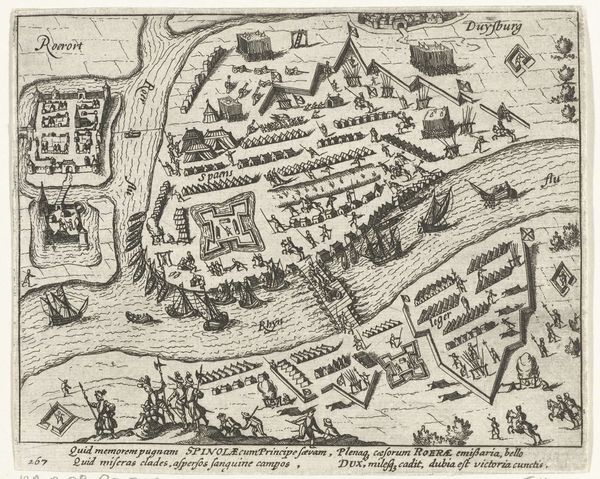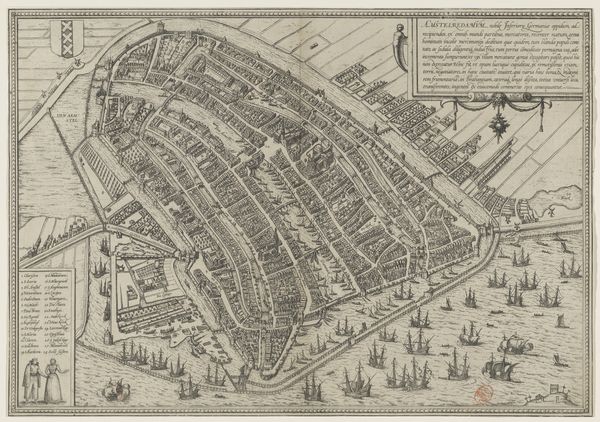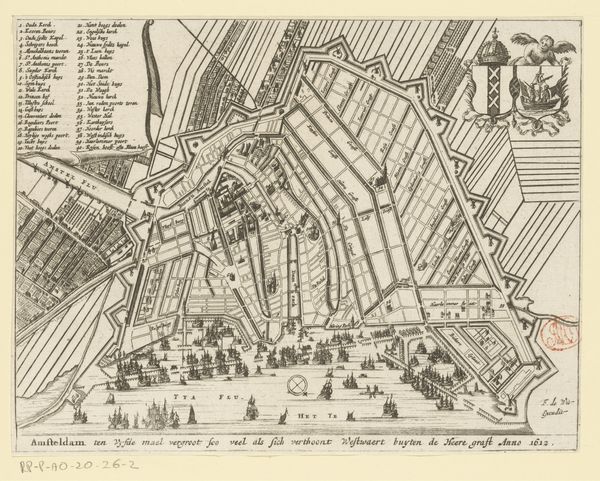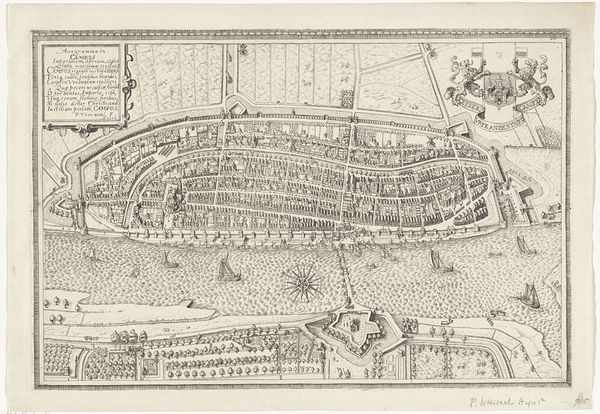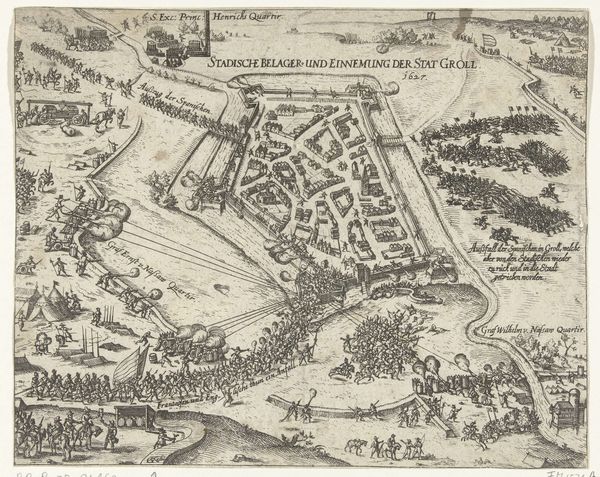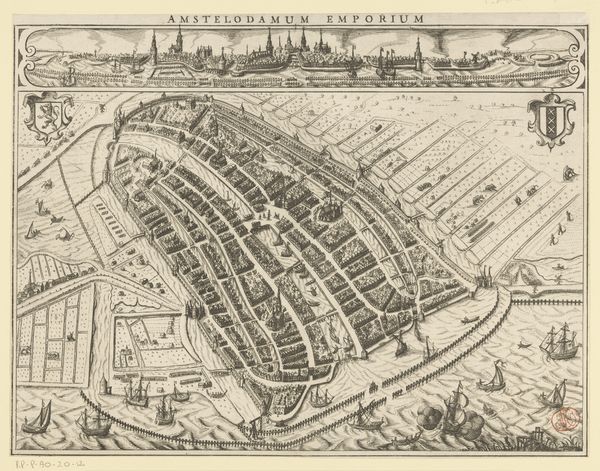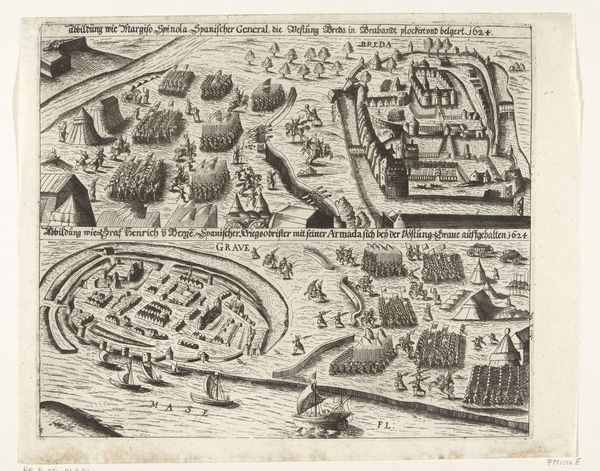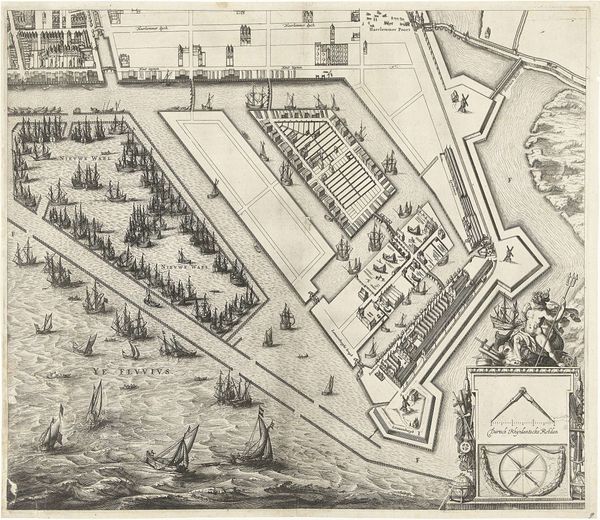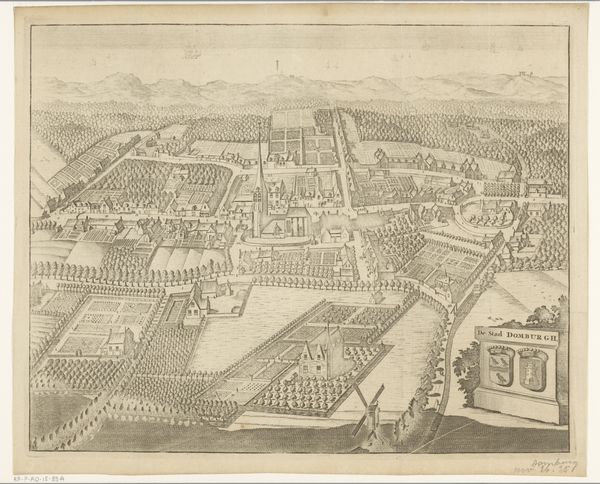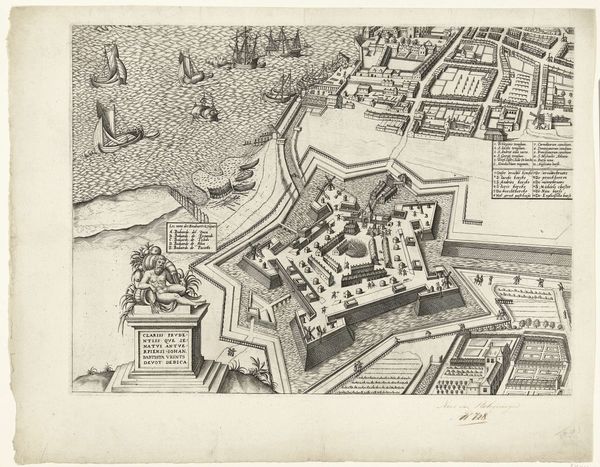
print, engraving
#
dutch-golden-age
# print
#
geometric
#
line
#
cityscape
#
engraving
Dimensions: height 248 mm, width 294 mm
Copyright: Rijks Museum: Open Domain
Pieter Hendricksz. Schut created this print of Amsterdam in 1619, using engraving techniques. Notice how the stark contrast between the ink and paper gives a clear depiction of the city's layout, almost like an architect’s blueprint. This wasn't a quick sketch; engraving involves meticulous carving into a metal plate, inking it, and then pressing it onto paper. This process allowed for multiple, identical prints, essential for distributing information in a pre-digital age. The very act of engraving, with its demand for precision and repetition, mirrors the burgeoning culture of commerce and industry in 17th-century Amsterdam. Consider the labor involved in creating the artwork, then think about how many copies were made and distributed. It speaks volumes about the value placed on detailed knowledge and its dissemination during the Dutch Golden Age. Looking closely at the material and method reveals a society valuing accuracy, mass production, and a rapidly expanding world. This challenges our ideas around fine art and craft.
Comments
No comments
Be the first to comment and join the conversation on the ultimate creative platform.

